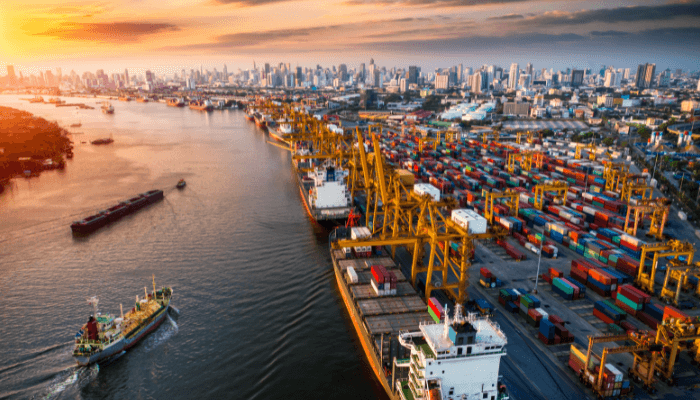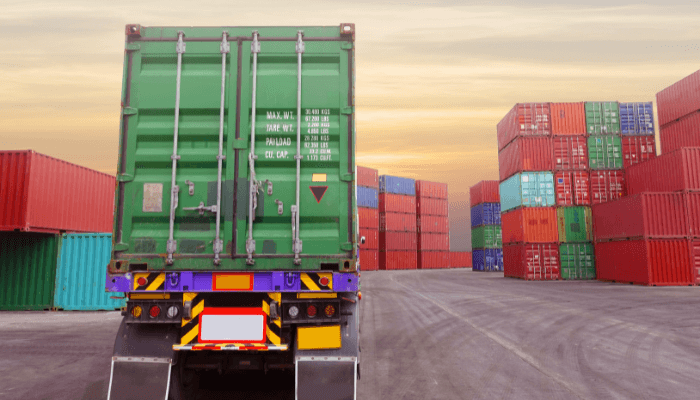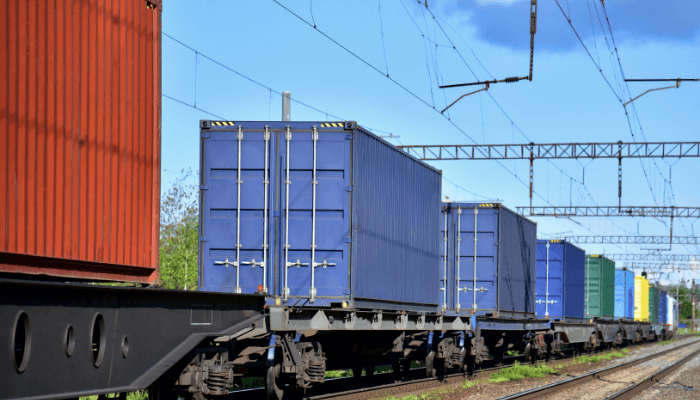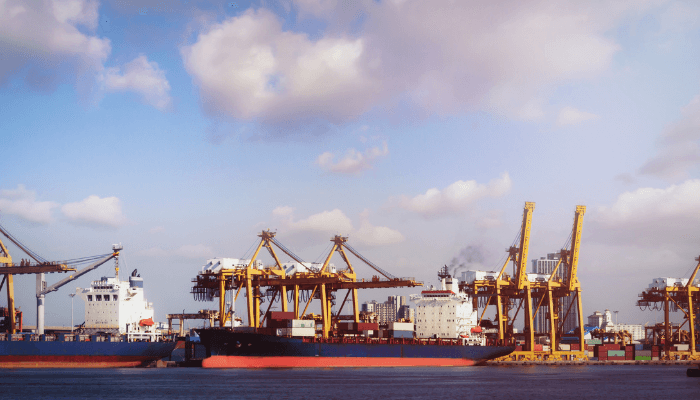Understanding Transloading in Logistics
Intermodal shipping, transloading, crossdocking… these logistics and shipping terms can be pretty confusing.
Each of these terms may even have several different interpretations depending on where it is used and by whom. Some of them sound more or less the same. Why are such different terms used when there is not much difference between them?
Some of them may not have much of a difference between them, but in certain types of goods movement, the exact terms have to be used to avoid ambiguity and subsequent service breakdown.
Clarity in communication is critical for the timely and efficient dispatch of goods and their delivery at the correct location, in good condition.
Clear communication between the different logistics departments and timely actions helps in timely deliveries while reducing transportation costs.

Modern logistics operations follow different methods to achieve their objectives. Transloading is a useful tool in the complicated world of logistics and warehousing that helps to cut costs and increase efficiency in service.
The complexity of operations often prompts organizations to entrust the running of their services to third parties which are referred to as outsourcing. Logistics operators rely on efficient transloading to meet their delivery deadlines.
The modern intermodal Twenty Equivalent Unit (TEU or 20’ container) and Forty Equivalent Unit (FEU or 40’ container) containers are the most commonly used equipment for the transport of cargo by land or sea these days. These standardized container sizes have immensely popularized as well as helped in increasing the efficiency of transloading.
Intermodal Shipping
Intermodal shipping is a term that means the movement of cargo using two or more different modes of transport. It could be by road, rail, air, or water transport. But why is it necessary to use different modes of transport for a single consignment?
Cargo dispatched to nearby locations can go by truck from their storage location to the customer’s premises. But, let us take export cargo for example.
Overseas shipments are loaded onto trucks that take them to the nearest airport or seaport. It is then unloaded and moved to a cargo plane or a cargo ship for its onward journey.
Here, two modes of transport are used – road as well as air or sea. This is called intermodal freight.

Warehouses or logistics facilities are all not located at airports or seaports. Most of them are located quite far away in industrial areas or market centres. Inevitably, goods from such facilities have to be transported first by road to be put on a train, plane, or ship.
Once the cargo reaches its destination, it will most probably have to be loaded onto a truck once again, for onward dispatch to its final destination. Throughout the journey, the cargo container remains unopened and is only moved from one mode of transport to another.
One great advantage of intermodal transport is that the container used for transporting the goods remains unopened throughout its journey and can also be used for storing the goods for short periods. Intermodal containers are used by many organizations as storage units. They are secure and easy to store in a container yard.
Transloading
Transloading is the movement of goods using different modes of transportation as in intermodal shipping. But the similarity ends right there. In transloading, cargo is moved and rearranged between the different modes of transport.
It does not stay in the same container nor does it follow the same configuration as when it was loaded initially from its origin. An example is when boxes or pallets are moved from a truck and placed on the floor of a rail wagon or stowed in the cargo section of a ship.
Products such as oils may be transferred to larger tanks using heavy-duty pumps. Cement bags may be transferred from a truck and arranged inside a larger rail cargo wagon. Cargo that is loose-loaded may be palletized at a stage en route for onward shipment. In certain other cases, cargo may be repacked in boxes for ease of transport.
Supply chain these days is all about the speed of delivery of goods while at the same time controlling costs associated with its storage and transport. Transloading helps to connect the goods by the most efficient form of transport as it moves along the supply chain.

A particular mode of transport may not be able to carry the cargo all the way from its origin to its destination. It may require different modes of transport. Yards used for transloading of bulk goods such as grains, ores, etc. have to be equipped with specialized Material Handling Equipment (MHE) such as silos, bulk goods elevators, conveyors, etc.
At a very basic level of transloading, two trucks can be backed up against each other and goods arranged between them. Transloading can be done at sea by the use of floating platforms, barges, and floating cranes.
Modern logistics software is often used by organizations to plan the best routes, select a suitable mode of transport, and decide when goods have to be moved between the different modes of transport.
Leading companies such as Amazon, UPS, FedEx, Geodis, CH Robinson Worldwide, etc. transload their cargoes to achieve seamless on-time deliveries. Their state-of-art technologies and software help them achieve this.
Typically, in intermodal transport, the cargo stays in the same container throughout its entire journey while transloading involves unloading and reloading the cargo at some stage during its journey.
Cross-docking
What is cross-docking?
This is a term that is often confused with transloading. In cross-docking, as soon as goods are received at a warehouse, they are segregated and dispatched to the customer without being taken to the warehouse storage area.

The segregation and dispatch of goods are generally done within the receiving area or a separate marshalling area of the warehouse. Sometimes inbound goods may be sent directly from a Container Freight Station (CFS) to the customer after the necessary checks by the handling agent. It may or may not involve repacking or re-labelling.
Goods from a single delivery or multiple deliveries are thus dispatched to their customers without any further intermediate storage. The basic idea of cross-docking is to cut or reduce storage and handling costs. It helps in the consolidation of products from multiple shipments without incurring storage costs.
Some Drawbacks
While transloading and other similar methods of transporting goods are quite useful for the smooth running of logistics operations, they do have some drawbacks. The intermediate handling of goods during their journey from source to destination might mean more risk of damage. Chances of pilferage during this movement are also quite high. Operators have to ensure that processes are in place to avoid such issues.
You might also like to read:
- What is Accessorial Charges in Logistics?
- What is Nearshoring in Logistics?
- 11 Basic Components of Logistics Cost
- What is Reverse Logistics and Recycling?
- What is Sustainable Logistics?
Disclaimer: The authors’ views expressed in this article do not necessarily reflect the views of Marine Insight. Data and charts, if used, in the article have been sourced from available information and have not been authenticated by any statutory authority. The author and Marine Insight do not claim it to be accurate nor accept any responsibility for the same. The views constitute only the opinions and do not constitute any guidelines or recommendations on any course of action to be followed by the reader.
Do you have info to share with us ? Suggest a correction

About Author
Hari Menon is a Freelance writer with close to 20 years of professional experience in Logistics, Warehousing, Supply chain, and Contracts administration. An avid fitness freak, and bibliophile, he loves travelling too.
Latest Maritime law Articles You Would Like:
Latest News
- What is the Purpose of DG Shipping?
- What are Logistics Risks?
- How Port and Terminal Operators Can Control Emissions?
- Minimum Quantity Commitment (MQC) and Liquidated Damages in Container Shipping: Concept and Relevance
- MARPOL (The International Convention for Prevention of Marine Pollution For Ships): The Ultimate Guide
- The Ultimate Shipping Container Dimensions Guide
Subscribe To Our Newsletters
By subscribing, you agree to our Privacy Policy and may receive occasional deal communications; you can unsubscribe anytime.















